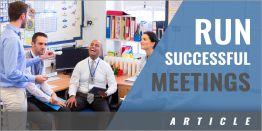|
By: Becky Schmidt Originally Published in: Volleyball: Steps to Success Provided by: Human Kinetics The libero is a position that was added to the game in 1998 to lengthen rallies and reduce the advantage seen by offenses. The libero does not follow normal subbing rules, which allows your best defender to stay in the backcourt the majority of the time. The following are ways to ensure your team uses this position to its full potential. Make sure the libero is a good passer. Defense should not be the only aspect that you think about when determining the libero. In fact, while the intent behind creating the libero position was to increase the effectiveness of the defense, volleyball saw an improvement in the offense because of increased serve-receive quality. Shift your serve-receive pattern so that the libero is in the middle of the pattern and you will greatly improve the likelihood of an in-system pass off serve. Channel the attack to your libero. Use the block to entice your opponent to attack your libero. Even if it is the opponent's best shot, do not block the area of the court that your best digger is defending. Put your libero in a position with the greatest defensive responsibility. Assuming that the strength of most opponents is attacking from the left side and you are running either a rotation or rover defense, your libero should be in the left back. If you are running a middle-middle defense, then the libero should generally be in the middle-middle position. When playing a perimeter defense, look at the skills of the player when determining whether he should be in middle back or left back because both positions hold significant responsibility. Of course, there are always exceptions to these guidelines, so if you go against them, carefully consider the rationale. When the setter makes the first contact, whose responsibility is it to set the ball? It used to be common for the setter, after taking the first contact, to pass the ball to the right side for the set. Now it is more common for the setter to dig to the middle of the court where the libero can set to either the right or left side. Remember that the libero can use her hands to set only if she is behind the 10-foot (3 m) line. As more emphasis is placed on a strong right-side attack, having the libero take the second ball creates a solid out-of-system attacking option. Don't be afraid to think creatively in your use of the libero. Just because the vast majority of liberos play left back doesn't mean they have to, and just because the vast majority of liberos play defense for the middles doesn't mean that they have to. Think creatively not just to use all of the talents of the player you have in that position, but to deceive the opponent as well. Maybe your libero is incredible at covering blocked balls, but because she is playing in the middle back of a perimeter defense, she is not the primary coverage for the majority of your hitters. Moving the libero into the left back and changing your defensive system might be warranted. Maybe you have a middle hitter who is better at defending than your left side. Using your libero effectively might mean having her play three rotations for a middle and two rotations for a left side. Understand the rules of the position, but don't be limited by conventional strategies. MISSTEP The libero commits setting violations. Correction Remember that the libero cannot overhead set to an attacker in front of the 10-foot (3 m) line. To avoid confusion, the libero should become accurate at forearm passing to a hitter for the attack. Also, remember that if the libero defends a tipped ball with her hands in front of the 10-foot line, the front-row setter is not allowed to attack it above the plane of the net. |






